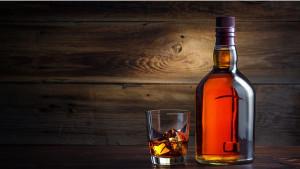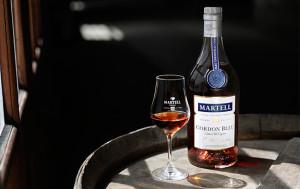
Written by Reinout van Malenstein, IP expert and collaborator of the China IPR SME Helpdesk
Real names on fake products. China has often faced this problem in the past thirty years, also in the spirits industry. Fake bottles with Martell, Johnny Walker and other known names could be found in shops and in entertainment venues around the country.
After China became a member to the WTO and become more serious about IP protection, slowly the cases where infringing copycats used the real names became lower. It became clearer to infringers that such copying would mean trademark infringement as most companies would register the name of their product and the name of their company as a trademark in China.
What infringers did next: imitating the shape of the bottle

|
The question then for these companies was how to still get the consumer to buy their fake products by making consumers believe they are buying the real thing. Slowly the names of the products started to become a bit different. First a difference of one letter and later more and more letters were different, so as to still lure the consumer into buying these fake products.
Then the copycats realized that consumers often look at the shape of the bottle in order to know what they are buying. As the bottles of spirits often have interesting shapes to them as a luxurious product, more and more bottles started to be marketed which are identical or similar copies of the famous spirits bottles.
Luckily, the law in China was also moving forward and 3D protection of shape of the bottle become available. Though a 3D protection of the trademark, the shape of the bottle can be protected from being copied by copycats.
Martell and infringement
But how does this bottle infringement work nowadays? Can you win a case when your 2D or 3D trademark gets infringed in China?
Being a victim of fake products for a long time in China, Martell, through the years has registered various trademarks including names, 2D (The 2D trademark is a view of the Martell bottle from the front) and 3D trademarks (full shape of the bottle) in order to protect their rights.
Yet, again they were faced by two companies trying to profit from their goodwill. This time the companies had copied the shape of various Martell bottles throughput a wide range of their assortment.
Good news for the company is that a district court in Guangzhou ruled that the companies and the legal representative have infringed Martell’s 2D and 3D trademarks regarding its cognac bottles.
The court ruled that a global view must be taken in order to decide whether the relevant public will be confused, by comparing the similarity of the bottles of the infringer, with Martell’s trademarks and bottles. As the companies had put a line of various bottles on the market that all were very similar to the 3D trademarks and bottles of Martell.
The court also found that the Chinese company had slavishly imitated Martell’s Cordon Bleu bottle on which it has a 2D trademark. By doing so, as this created a link by the relevant public between the infringer and Martell, the court also deems this slavish copy of the bottle a trademark infringement
Other alternatives and Do’s
A design patent protects new and creative designs of shapes for ten years. If a brand deems that it might be too hard to get a 3D trademark registered, the design patent might be a good solution to still get a protection for the shape of the bottle.
Other ways to go against this type of fake products are unfair competition, copyright protection, and product safety. Registering your IP rights and taking action against fakes is highly recommended.
Not acting might mean being liable for anyone getting hurt by drinking fake spirits. Apart from the dangers here to people, getting back your reputation would be hard after a big incident involving fake products of your brand.
This article was originally published on the website of the law firm HFG Law&Intellectual Property
Details
- Publication date
- 24 July 2020
- Author
- Executive Agency for Small and Medium-sized Enterprises
